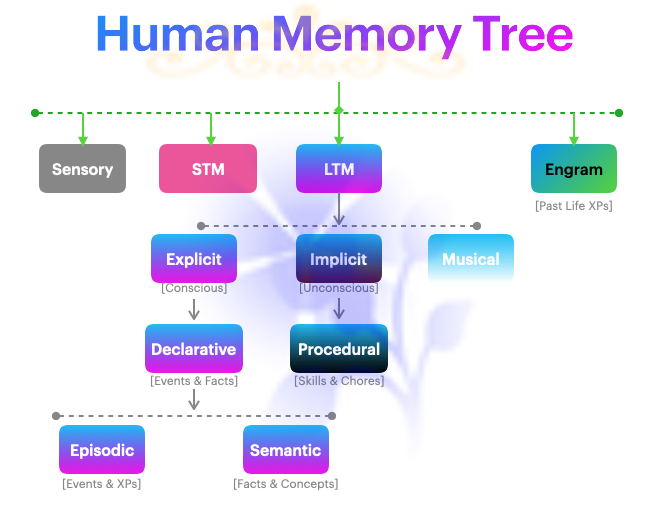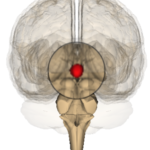Memory Types In Neuroscience And PLRT

Everything is memory isn’t it? How would your life be if you woke up one day and don’t recollect a thing?
Don’t we all try hard to recollect all that we ate on getting a stomach ache? Memory is what helps us remember the cause.
Memory is not just being able to recollect what happened in the past but it is also the various automatic skills, such as riding a bicycle, playing a musical instrument, or typing on a keyboard, including how much you have in your bank or lent to a friend!
Neuroscience plays a crucial role in understanding the intricate workings of memory.
Through its lens, we can explore the mechanisms, processes, and neural networks involved in memory
- formation,
- storage,
- retrieval.
Here’s how neuroscience connects to memory.
Neural Basis of Memory
Neuroscience investigates the neural structures and pathways that underlie memory.
The hippocampus, a region in the brain, is known to be critical for the formation of new memories, particularly episodic and declarative memories. (This is the organ glowing in the above diagram)
Other brain regions, such as the prefrontal cortex and amygdala, also contribute to different aspects of memory processing. Studying these brain regions and their interactions provides insights into how memories are encoded and consolidated.
Let’s trace systematically on how memory is formed and retrieved along with what are the different type of memories we have.

Memory formation and retrieval
Sensory memory is the initial stage of memory processing that involves the temporary storage and quick perception of sensory information from our environment.
It acts as a buffer that holds incoming sensory stimuli for a very brief period. One example of sensory memory is iconic memory, which specifically relates to visual information.
In the case of vision, sensory memory allows us to retain a vivid visual image of a scene or object for a short duration. Research suggests that iconic memory lasts for approximately 200 milliseconds (ms) after the initial exposure to the visual stimulus. During this brief time, the sensory information remains in a highly detailed and accurate form.
Following the initial perception, if we pay attention to the visual information, it is transferred to our working memory, also known as short-term memory (STM).
Working memory is responsible for holding and manipulating information that we are actively processing in our conscious awareness. In the context of visual information, this transfer from sensory memory to working memory allows us to maintain the visual details and actively manipulate them for a brief period.
Note: Working Memory is also known as Executive Memory, which refers to the executive functions involved in working memory. Executive functions are cognitive processes that control and regulate other cognitive processes, including working memory. They involve processes such as attentional control, task switching, inhibition of irrelevant information, and problem-solving.
Working memory has limited capacity and can typically retain information for about 20 seconds. During this time, the visual information from sensory memory is encoded and stored in long-term memory (LTM).
Encoding involves the conversion of sensory information into a format that can be stored and retrieved later. In the case of visual information, this may involve linking the visual details with existing knowledge or forming associations with other memories.
Once the visual information is encoded into long-term memory, it can be retrieved at a later time.
The retrieval process involves accessing the stored memory and bringing it back into working memory for conscious awareness and use. This retrieval follows a similar pathway as the initial perception: from long-term memory to working memory, allowing us to recall and manipulate the visual information.

Specialized types of memory
Additionally, neuroscience sheds light on specialized types of memory, like musical memory, declarative memory (which encompasses episodic and semantic memory), and procedural memory. Neural networks and synaptic connections play a crucial role in the conversion of short-term memories into lasting, long-term memories.
Explicit memory, also known as declarative memory, involves conscious recollection of facts and events. It consists of two subtypes: episodic memory, which is the ability to recall specific personal experiences, and semantic memory, which encompasses general knowledge and concepts.
Implicit memory, on the other hand, involves unconscious memory processes and influences our actions, skills, and habits without conscious awareness.
Musical memory involves a complex interplay between auditory perception, emotional response, motor coordination, and memory systems. It explains why certain melodies or tunes evoke powerful emotional and memory responses.
Procedural memory refers to the memory of skills, habits, and procedures that we acquire through repetition and practice (procedural memory formation and execution). It encompasses motor skills, cognitive routines, and learned behaviors.
Building upon the connection between neuroscience and memory, it is worth mentioning that past life regression therapy (PLRT) delves into the exploration of memories beyond the boundaries of current lifetime and also known as far-memories, past-life memories and technically Engram .
“Technically known as the Engram – an original traumatic situation that continues to influence behavior for lifetimes. Similar to how an organism gets caught into molten lava and its form remains intact for eons.”
[Source: Why Me? Could your chronic problems Be Rooted In your Past live? by Dr. Venu Murthy]
In certain states of awareness, particularly when the brain is in the delta state, the pineal gland activates and allows access to memories that extend beyond our current lifetime experiences . These memories which are known technically as “Engrams” or far-memories are stored in the collective unconscious, a concept introduced by renowned psychiatrist Carl Jung.
These Engram are repressed (At Amarantos we believe that nature is always right and amnesia or forgetfulness of our past life memories is adaptive but when they contain the unresolved they are maladaptive and require an expert to diffuse the charge in these engrams) but unresolved past keeps playing up in terms of symptoms like depression, anger or some psychosomatic illness. They contain massive emotional charge within them and should be systemically penetrated into by a proven time-tested techniques like the “Active Imagination, or “Prati-Prasav” or “Amarantos® 15-Stage PLRT Process” only by certified or licensed professionals.
The collective unconscious is thought to be a reservoir of shared, archetypal experiences and knowledge that is accessible to individuals on a deeper level. Amarantos® 15-Stage PLRT process aims to tap into this collective unconscious by facilitating a shift in awareness and activating the pineal gland.
The pineal gland plays a significant role also called the “third eye,” is a small endocrine gland (as it secretes DMT — N-dimethyltryptamine,) located deep within the brain.
In the delta state, which is associated with deep meditation or trance induced using the Amarantos 15-Stage PLRT process, it helps in transcend the boundaries of time, space, personal identity to identifying with the sub-personality.
During Amarantos® 15-Stage PLRT Process, individuals are guided into a relaxed state where the brain’s activity may resemble that of deep meditation. In this altered state of consciousness (ASC), the pineal gland facilitates the retrieval of memories from past lives or experiences beyond one’s current lifetime. These memories, accessed from the collective unconscious, provide insights, healing, and a deeper understanding of oneself.
I hope you are able to appreciate this unique integration of neuroscience, memory, and PLRT which is done only in Amarantos to provide a fascinating yet robust framework for understanding how our brain and consciousness interact. By examining the neural mechanisms involved in memory and altered states of consciousness, Amarantos contributes to the exploration of diverse aspects of human experience, including the possibility of accessing memories from past lives through the activation of the pineal gland and the end result of it all is healing.
So are you now ready to apply all this theory into application?
In conclusion we see that Memory is everything, and it can help us take us to the cause of an issue. But more distant the memory the deeper it is and hence the need to go deeper. Now we know that not every one can go into Deep Mediation to access these distant or far-memories and hence Amarantos uses the proven and safe Clinical Hypnosis.
So are you now read to explore the world of Hypnosis?

Some more interesting topics
Collective Unconscious is also known as Morphic Resonance
Morphic resonance is a concept proposed by biologist Dr. Rupert Sheldrake. It suggests that there is an inherent “memory” or influence that can be transferred across individuals of the same species or even across different species. This resonance is believed to contribute to the development and behavior of organisms, as well as to the collective memory of a group or species. It implies that patterns of thought and behavior can be influenced and shaped by the experiences and knowledge of previous individuals, creating a kind of shared memory or information field.
Neurotransmitters and Memory
Neurotransmitters, chemical messengers in the brain, play a vital role in memory. For example, acetylcholine is associated with attention and learning, while dopamine is involved in motivation and reward-based memory. Understanding how neurotransmitters modulate synaptic connections and influence memory formation helps unravel the chemical processes underlying memory.
Long-Term Potentiation
Long-term potentiation (LTP) is a phenomenon observed in neuroscience that is closely linked to memory. It refers to the strengthening of synaptic connections between neurons, resulting in enhanced communication. LTP is believed to be a cellular mechanism underlying memory formation and synaptic plasticity, where neural circuits are modified to encode and store information.
Neural Networks and Memory Recall
Memory recall involves the reactivation of specific neural networks associated with a particular memory. These networks consist of interconnected neurons that form a unique pattern representing the memory. Neuroscience studies have revealed that the activation of specific regions, such as the hippocampus and cortical areas, during memory recall is crucial for retrieving stored information.
Neuroplasticity and Memory: Neuroplasticity, the brain’s ability to reorganize and adapt, is closely intertwined with memory. Neural connections can be modified through synaptic strengthening or pruning, facilitating the formation of new memories or modifying existing ones. Research on neuroplasticity provides insights into how experiences, learning, and environmental factors shape and influence memory processes.
By examining the neural correlates of memory, neuroscience provides a deeper understanding of how memories are formed, stored, and retrieved in the brain. This knowledge has significant implications for various fields, including education, psychology, and therapeutic interventions targeting memory enhancement or addressing memory-related disorders.
